Tale of Two Cities: Yushu and Kathmandu's Contrasting Paths to Post-Earthquake Recovery
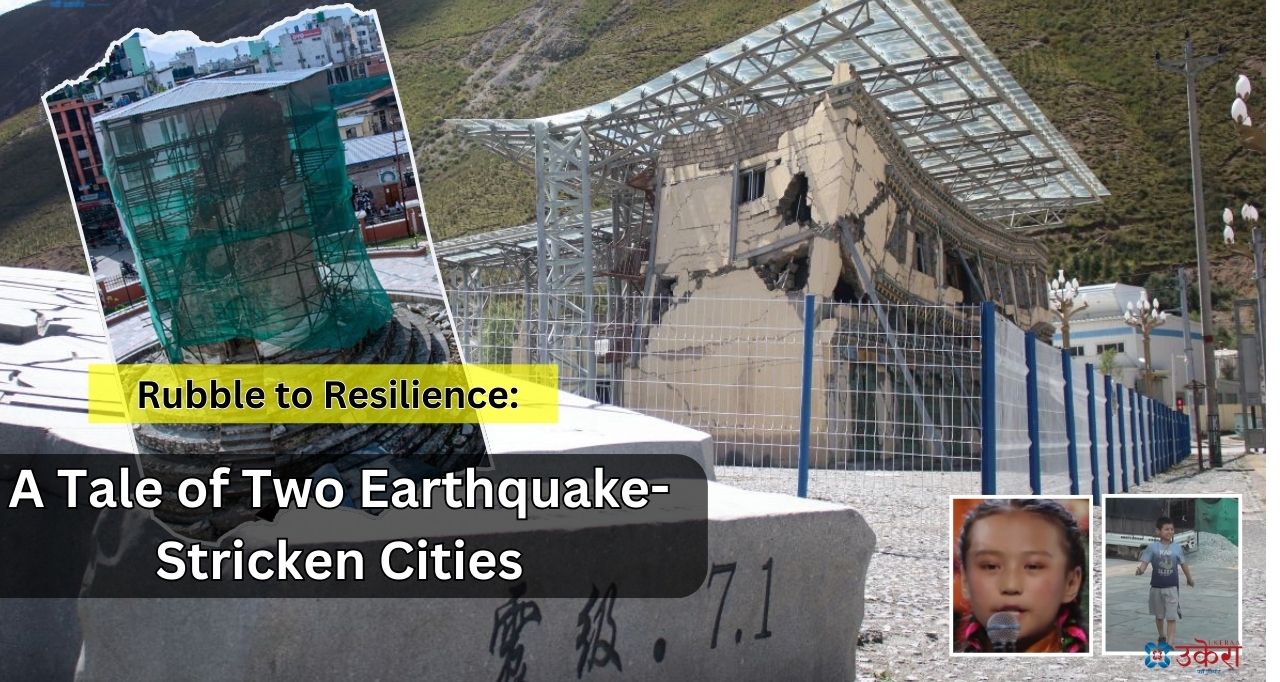
China (Qinghai): Despite her face being covered in wounds, Tserang Yungkyi's face was bright, holding a biscuit in her hand. Her photo, sitting in her mother's lap, was the main attraction at the Yushu Earthquake Relief Memorial Hall.
When we arrived at the memorial hall in Yushu, northwestern Qinghai province, China, on September 18, 2024 (Asoj 2, 2081), the Interpreter Da yang said, "At that time, she was eight months old. Now she's 14 years old."
Disasters bring the same experiences wherever they occur. Those who struggle can be found everywhere. Miracles can happen anywhere. In Yushu, finding an 8-month-old baby girl safe in the earthquake rubble after 48 hours was a miracle.
A miracle didn't just happen in Yushu; it also occurred in Nepal on April 25, 2015. The 7.8 magnitude earthquake that struck at noon took the lives of over 8,000 Nepalese. But Sonish Awal was found alive even after being buried in the rubble for 22 hours.
When the earthquake hit, five-month-old baby Sonish was sleeping at home. His parents were outside. The house where he was sleeping couldn't withstand the earthquake's force and collapsed. He was buried along with his sister Sonia, who was holding him. His sister was found after four hours, but Sonish remained buried in the rubble.
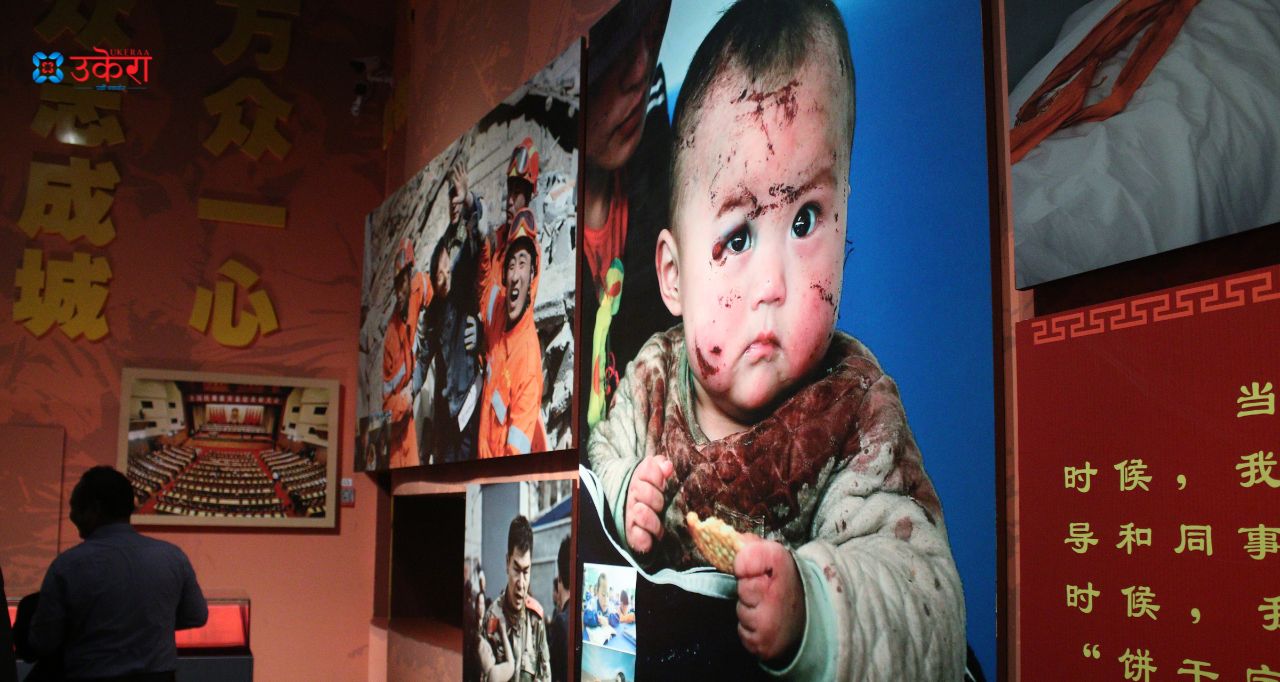 a long time, his crying could be heard from the debris. His family tried to find him by turning over the rubble, but they couldn't. Later, a team from the Nepali Army and Armed Police Force was deployed to rescue him. After 22 hours of continuous search, Sonish was found alive.
a long time, his crying could be heard from the debris. His family tried to find him by turning over the rubble, but they couldn't. Later, a team from the Nepali Army and Armed Police Force was deployed to rescue him. After 22 hours of continuous search, Sonish was found alive.
Fortunately, he was under a wooden beam when the house collapsed. That beam saved him from being completely buried. He suffered minor injuries on his body but no serious problems. Now he's studying in fourth grade.
On April 14, 2010 (Baisakh 1, 2067), Yushu was in chaos. A 7.1 magnitude earthquake devastated the settlement here.
The earthquake that struck at 9:49 AM took the lives of 4,000 people. 12,135 people were injured. The government and locals joined hands to restore the city, which is religiously very important and predominantly inhabited by Tibetans, to its former state.
Aftershocks of up to 6.9 magnitude continued to terrorize the city, which had already been reduced to a pile of rubble.
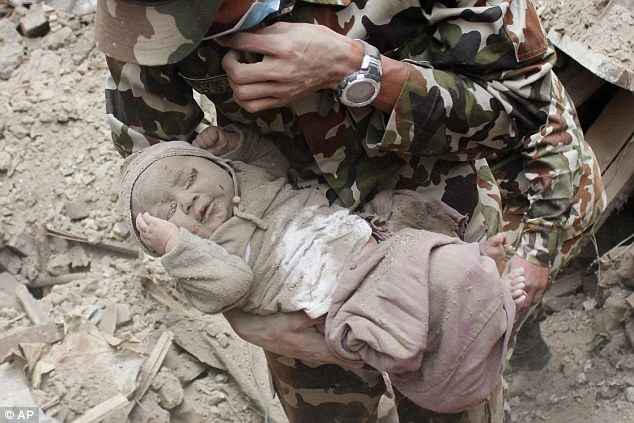 In the span of 14 years, the Chinese government has spent seven billion yuan to transform Yushu, which had been reduced to rubble due to the earthquake, into a modern city.
In the span of 14 years, the Chinese government has spent seven billion yuan to transform Yushu, which had been reduced to rubble due to the earthquake, into a modern city.
However, they haven't forgotten the pain inflicted by the earthquake. To ensure that future generations don't forget how much suffering went into building this city, they have preserved that tragic moment on the walls of the museum.
Those who have seen the grandeur of Yushu can understand what disaster this city has endured when they reach the museum. Looking at Tserang's picture there, it might be impossible for anyone to leave the museum without being emotional.
Small shoes, notebooks, pens, bags found in the earthquake rubble - as many items as possible have been safely preserved in the museum. These items have been embedded into the walls.
Not only the work of doctors and volunteers involved in the treatment, volunteers who lost their lives while searching for those buried in the earthquake, the search and rescue efforts, but also the monument with "Om Mane Padme Hum" written in memory of those who lost their lives in the earthquake makes one emotional.
When we reached Gesar Square in Yushu around 9 PM on Asoj 1, the locals were busy dancing.
Coincidentally, the Full Moon Festival was going on in China that day. Local Tibetan songs were playing from speakers in the open space, and locals were dancing merrily in a circle. This wasn't just for the festival; it's part of the locals' daily lifestyle.
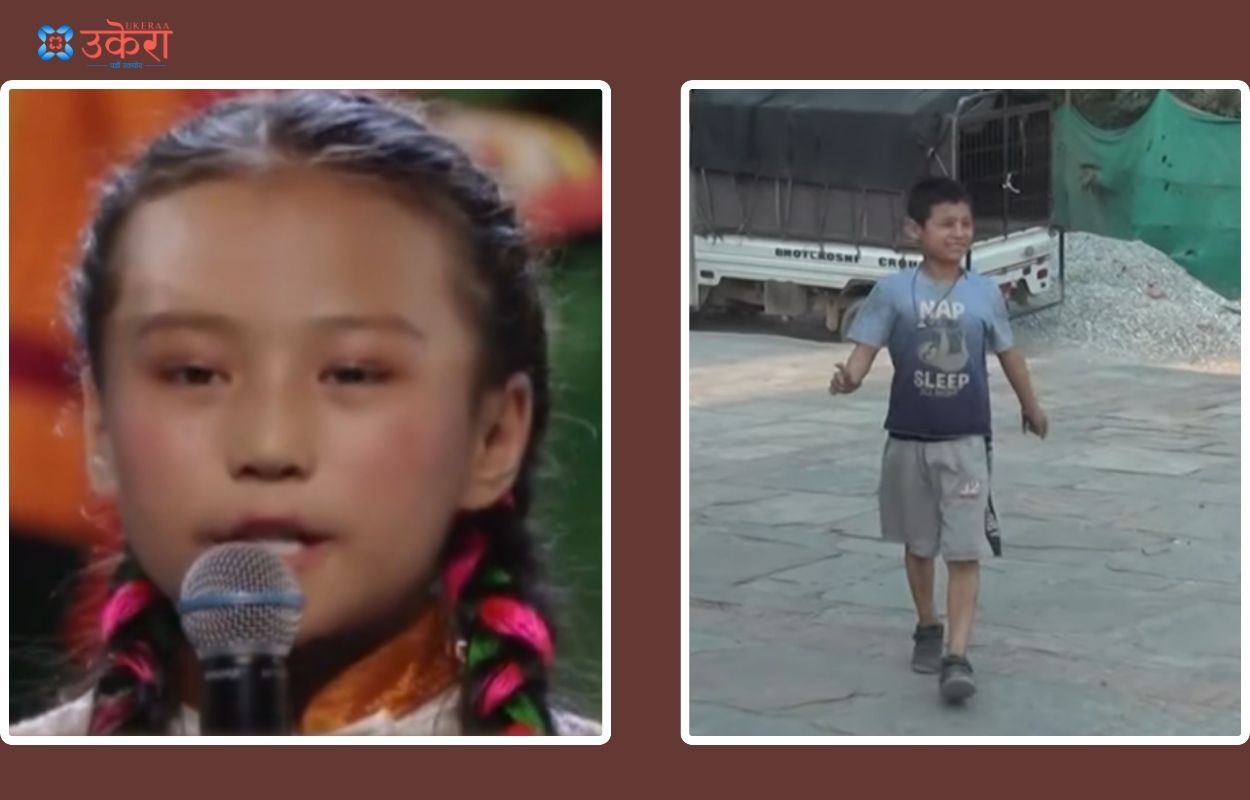 To understand how grand this city is, the huge statue of the brave Tibetan warrior King Gesar riding a horse in the middle of Gesar Square was enough.
To understand how grand this city is, the huge statue of the brave Tibetan warrior King Gesar riding a horse in the middle of Gesar Square was enough.
Yushu, which falls within China's Qinghai province, is among the remote areas of this region, situated at an altitude of four thousand meters. 90 percent of the population here is of Tibetan origin. They enjoy saying and hearing not only "Xie xie" (thank you) in Chinese but also "Tashi Delek" (greetings) in Tibetan equally. The Chinese government has reserved the Yushu area for people of Tibetan origin.
The development of this place, considered remote, was spearheaded by the central and local governments along with the Chinese people. With their strength, it didn't take long for Yushu's face to change. In just 14 years, Yushu succeeded in becoming known as one of the developing cities among Chinese cities.
As soon as you exit after observing the underground museum, a ruined house on the right catches the attention of visitors.
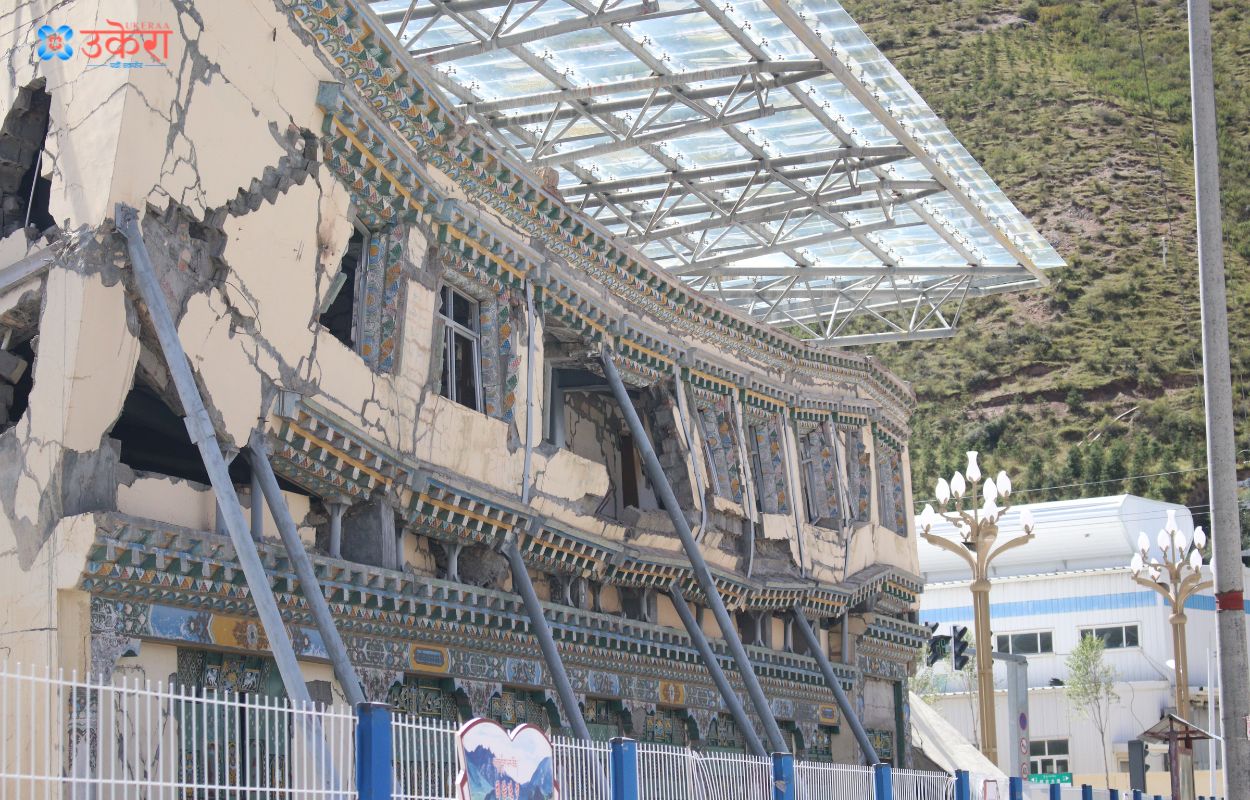 way the parts of this three-story building, supported by large iron beams on all sides, are damaged was enough to understand how powerful the earthquake that hit Yushu was and to what extent it caused damage.
way the parts of this three-story building, supported by large iron beams on all sides, are damaged was enough to understand how powerful the earthquake that hit Yushu was and to what extent it caused damage.
Efforts have been made to keep the building as safe as possible by putting a modern transparent roof.
The condition of that building built in Tibetan style was enough to understand how powerful an earthquake had hit Yushu 14 years ago. The condition of the building sends chills down one's spine.
The local government of Yushu neither demolished the building nor reconstructed it. They preserved the building to remind of the Yushu earthquake. By supporting it with iron beams on all sides, they have kept it as much as possible in the condition it was after the earthquake. The roof has also been made transparent by using glass.
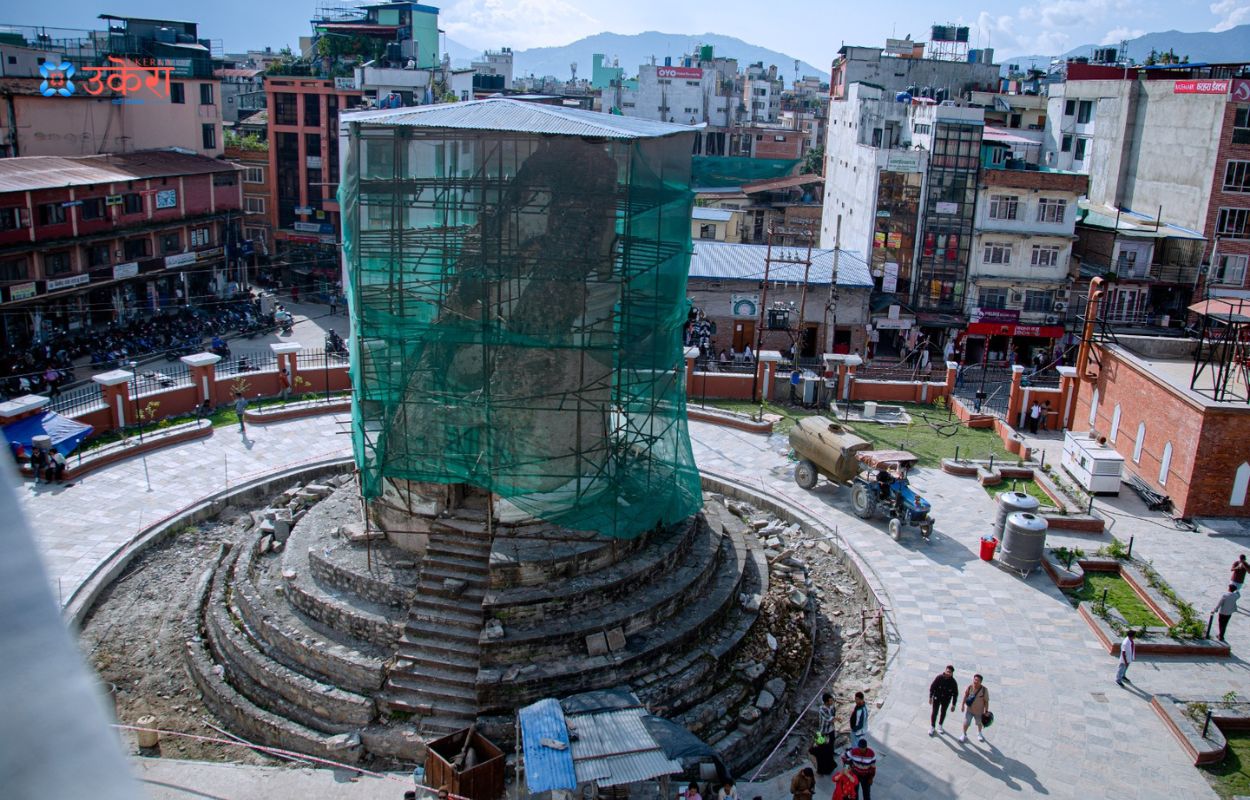 what the Chinese government has done to remind of the museum and the post-earthquake situation in Yushu brought memories of Nepal.
what the Chinese government has done to remind of the museum and the post-earthquake situation in Yushu brought memories of Nepal.
The effort made by the Chinese government to restore this ancient and cultural settlement destroyed by the earthquake at an altitude of four thousand meters in the same style, and the deformity of Barpak in Gorkha after reconstruction in Nepal!
Understanding that crisis is also an opportunity, the local, regional, and central governments together transformed Yushu, which was devastated by the powerful earthquake, into a modern city in a short time. But here in Nepal, the beautiful settlement of Barpak became ugly through reconstruction. The structure of buildings made by the unwise government made Nepali-style houses in rural areas disappear, and the village was filled with tin sheds.
Yushu taught that those who lost their lives in the earthquake should be remembered at the state level. The courage of those who lost their lives during relief and search operations, the materials found in the rubble, along with the preservation of the already ruined structure showing how powerful the earthquake was - how necessary is it? The experience was felt at every step.
Remembering the negligence and results of the Nepal government in post-earthquake reconstruction made my chest burn.
What a coincidence that while touring the earthquake memorial museum in Yushu, the Dharahara tower in Nepal, which was destroyed in the 2015 earthquake, was opened to the public for the first time. If you look at the master plan of Dharahara, you can see an earthquake museum inside it.
It wasn't possible to easily contact Nepal from Yushu. After returning to the hotel, I sent a message via WeChat to Sanyog Nepal, the desk chief of Ukera in Nepal: "Here, I got a chance to visit the earthquake memorial museum in Yushu. There, they were supposed to make a museum about the earthquake inside 'Dharahara', please check how it turned out."
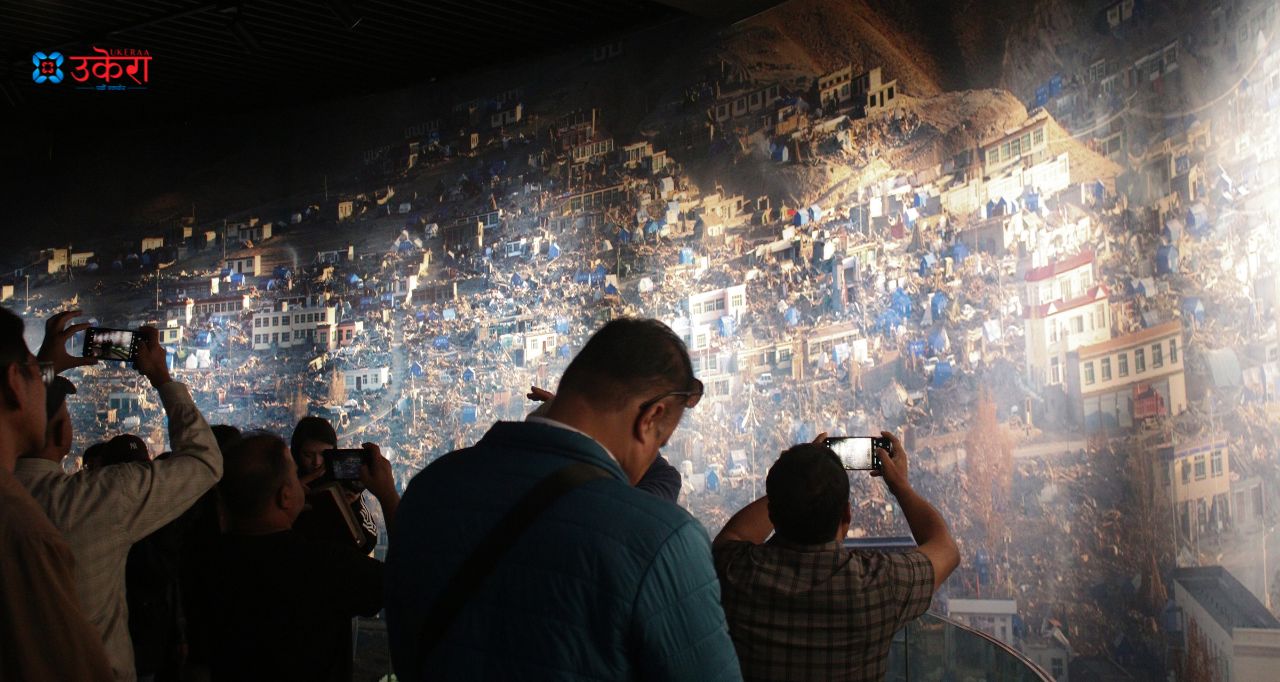 pictures in the news reports of its first opening to the public were not encouraging. They were showing the poor state of Dharahara.
pictures in the news reports of its first opening to the public were not encouraging. They were showing the poor state of Dharahara.
After arriving in Nepal at midnight on Thursday, on Friday I asked Monika Waiba, who was assigned to report on the opening of Dharahara, how the earthquake museum was. She said, "There's only a lift. Nothing else, the place where the museum was supposed to be is empty."
The condition of the lower part of Dharahara that survived in the rubble is enough to remind how powerful the earthquake that hit Nepal was. Just as they tried to change the face of Dharahara, if only they had preserved Dharahara's foundation! But the plaster applied 10 years ago hasn't been removed. The tin roof that can't even shelter from a simple rain remained the same even when it opened to the public after inauguration.
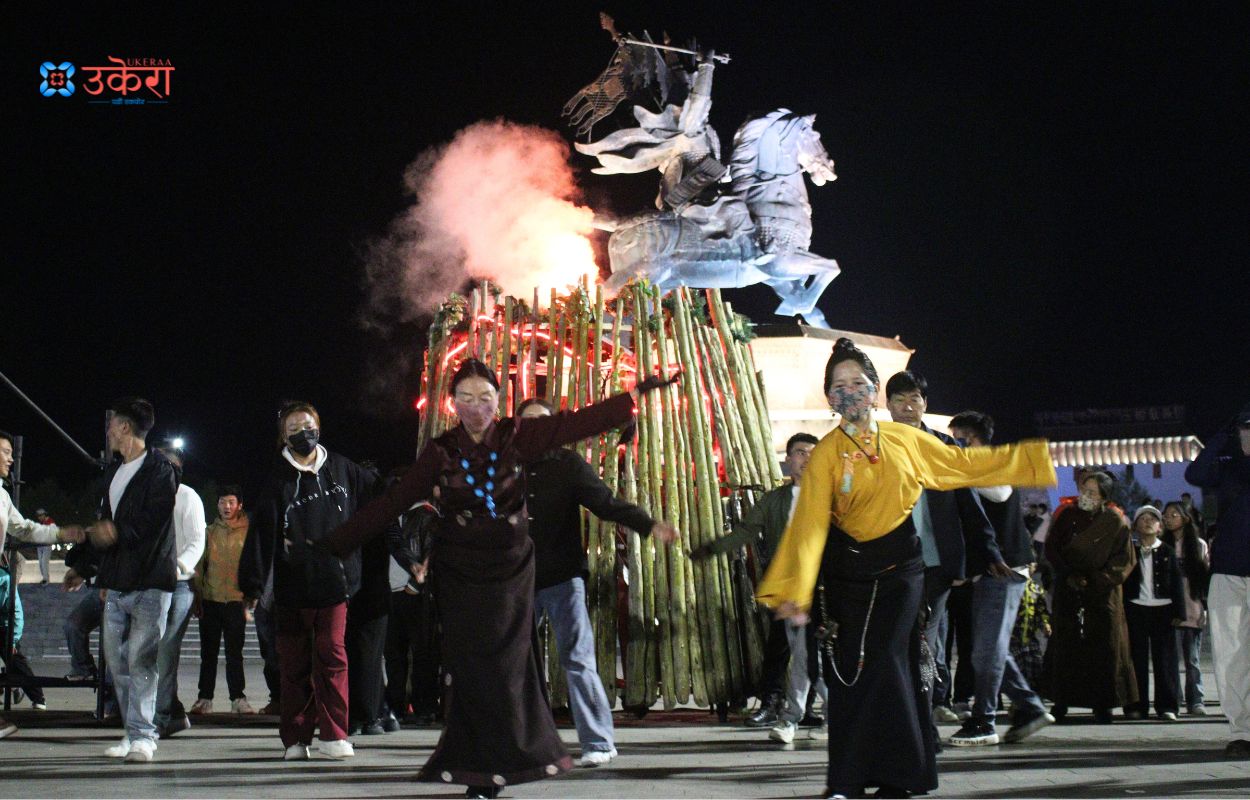 can be the same, experiences in disasters can be the same. The post-earthquake pain of the residents of Yushu in China or mainly Kathmandu, Lalitpur, Gorkha, and Sindhupalchok in Nepal can be the same experience.
can be the same, experiences in disasters can be the same. The post-earthquake pain of the residents of Yushu in China or mainly Kathmandu, Lalitpur, Gorkha, and Sindhupalchok in Nepal can be the same experience.
Despite the different geographies, the 'luck' of China's Tserang and Nepal's Sonish seemed the same. Coincidentally, some events can be similar.
But the result of the government's concern and strategy in post-disaster reconstruction cannot be the same. Examples are the ruined house in China's Yushu and Kathmandu's Dharahara.
Where disasters are understood as opportunities for improvement and work is done systematically, the results they bring are similar to today's Yushu. When rulers who see disasters as an opportunity for additional income sources, who don't care about Nepali cultural or natural identity, are in power, the result is like Kathmandu, Sindhupalchok, and Barpak of Gorkha.
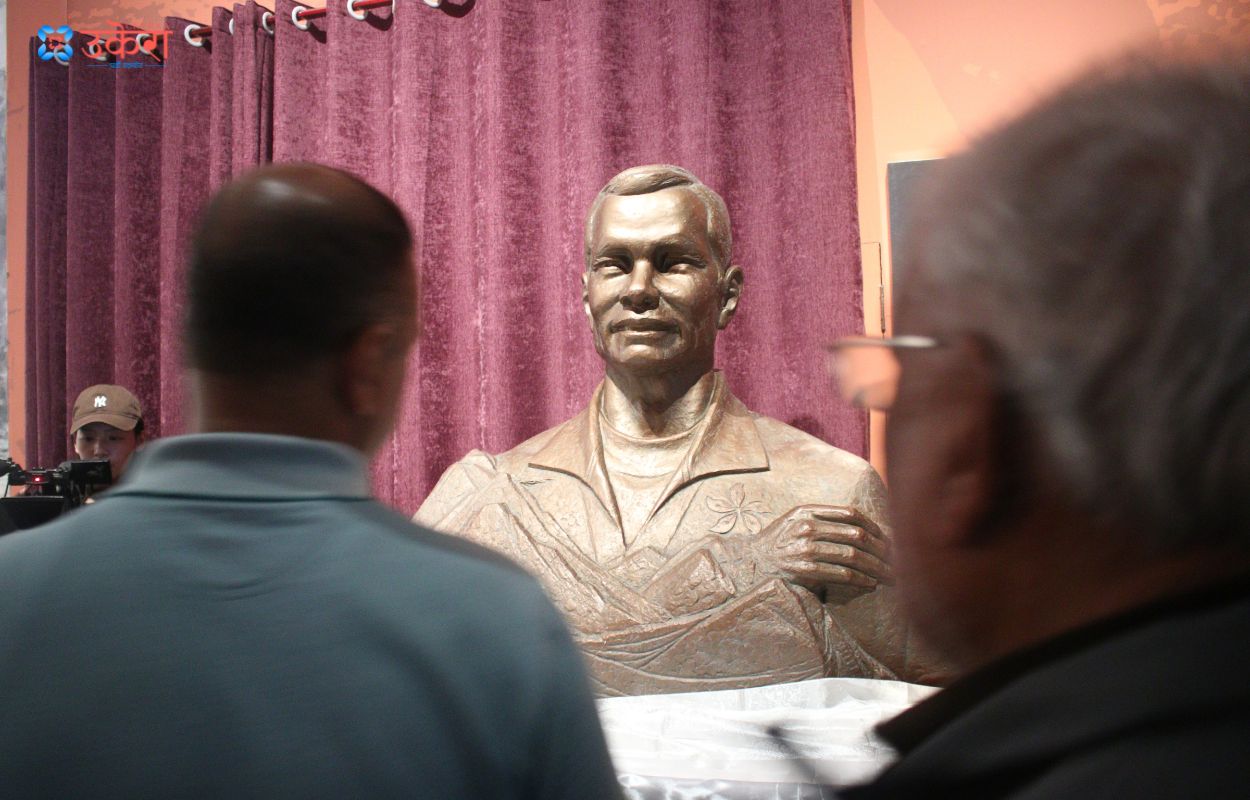 , located at four thousand meters, can be a developing city for China. But compared to the physical development of Kathmandu, it's a developed city. In the development path that Yushu has embarked on in 14 years after the disaster, Kathmandu hasn't even been able to enter in 10 years after the disaster.
, located at four thousand meters, can be a developing city for China. But compared to the physical development of Kathmandu, it's a developed city. In the development path that Yushu has embarked on in 14 years after the disaster, Kathmandu hasn't even been able to enter in 10 years after the disaster.
That Tserang of Yushu and this Sonish of Bhaktapur. That ruined building and this base of Dharahara. This is how it is, when the rulers' thinking itself is 'flawed', how much can luck alone sustain?
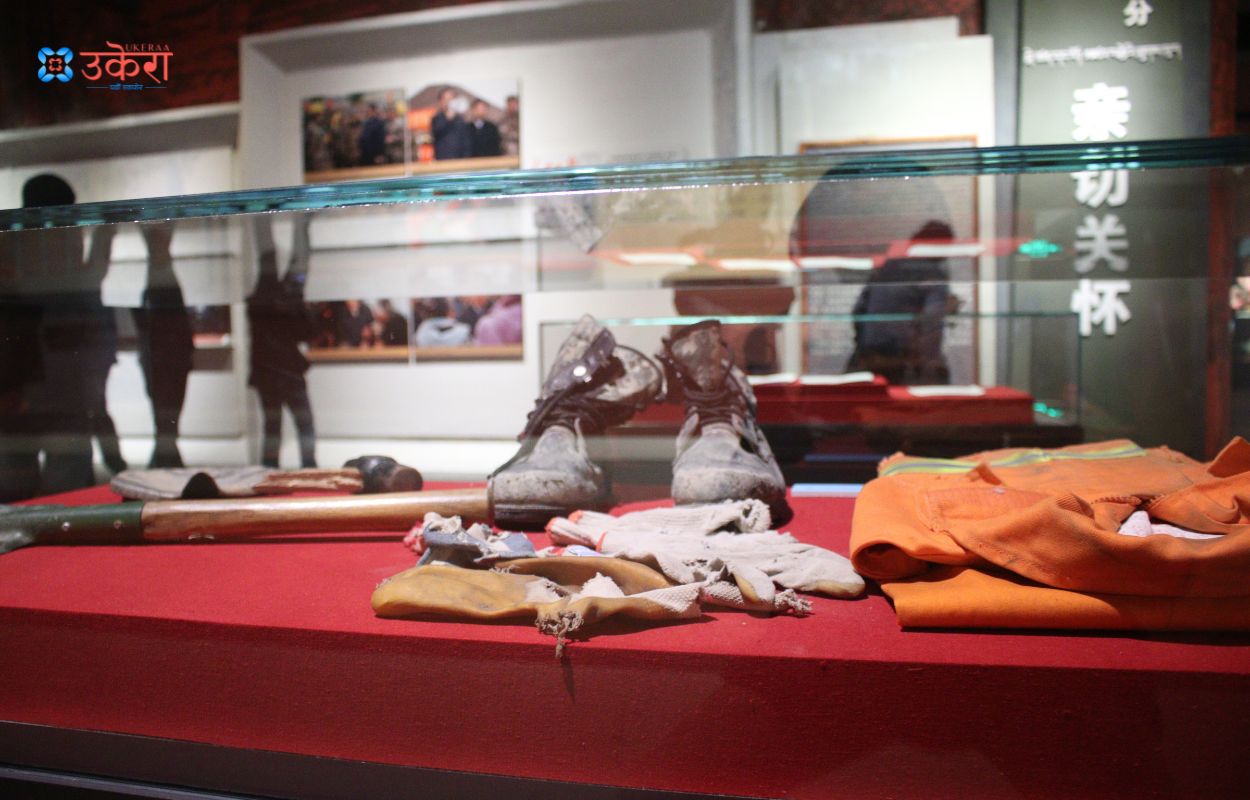
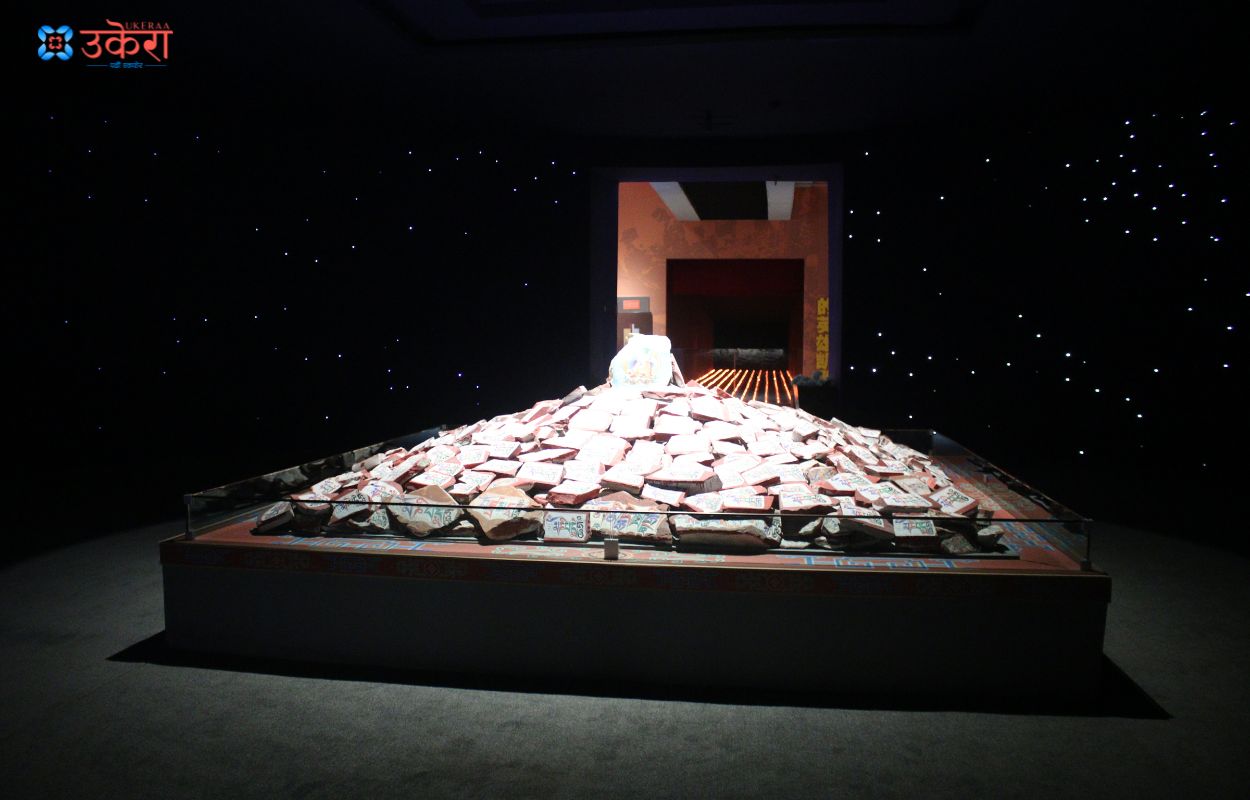
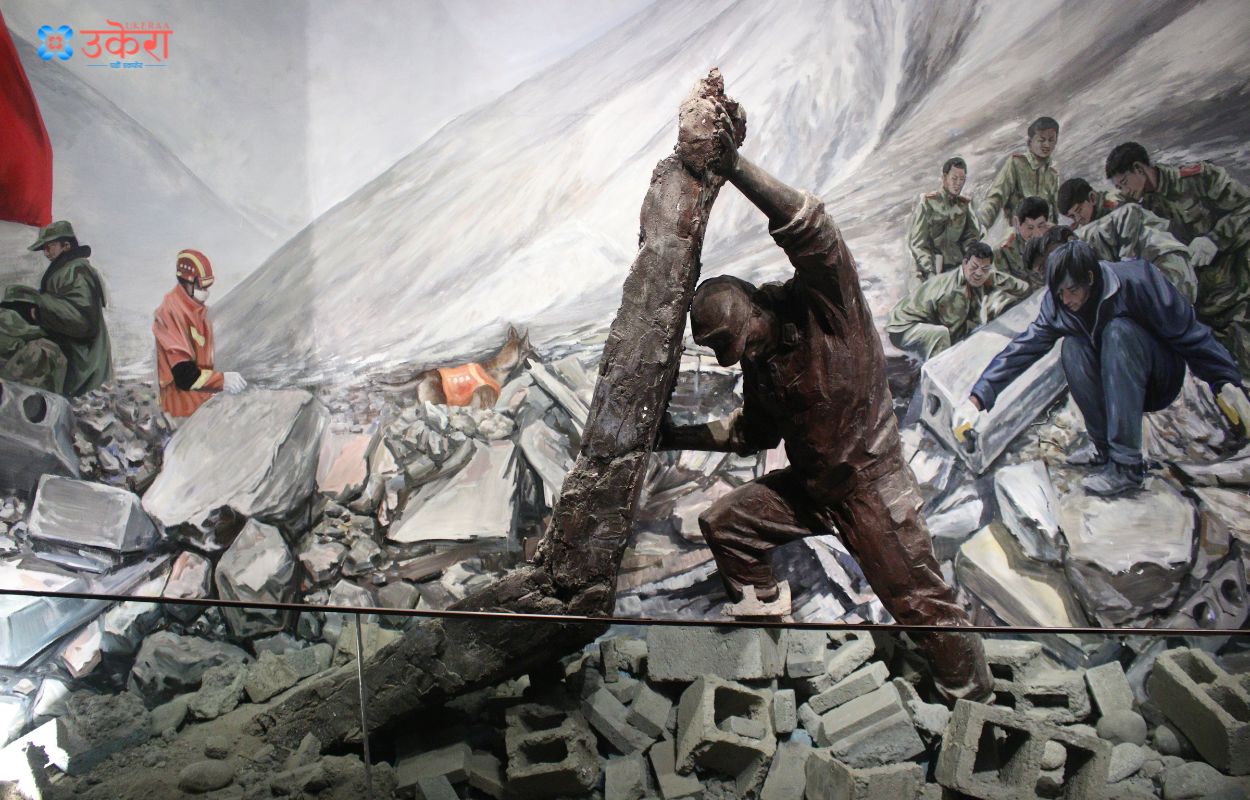
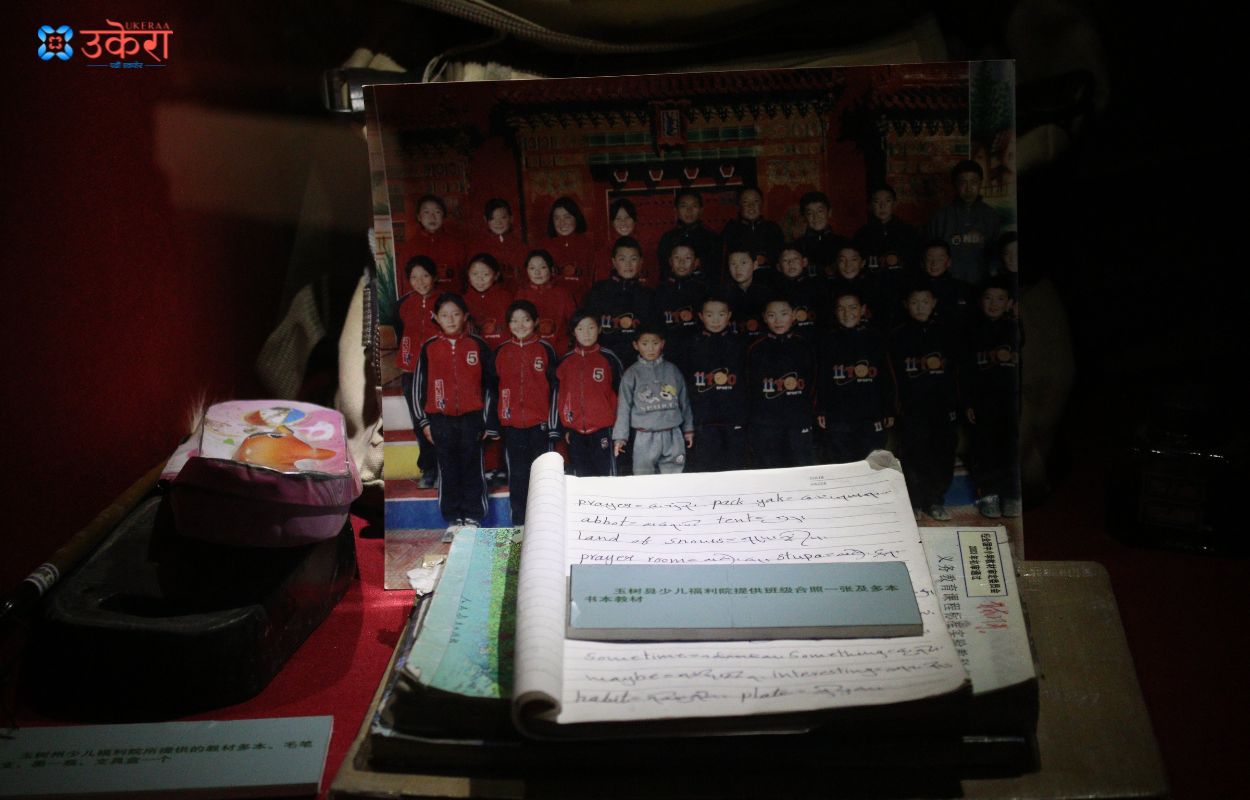
असोज ६, २०८१ आइतबार १६:०२:३० मा प्रकाशित
उकेरामा प्रकाशित सामाग्रीबारे प्रतिक्रिया, सल्लाह, सुझाव र कुनै सामाग्री भए [email protected] मा पठाउनु होला।










